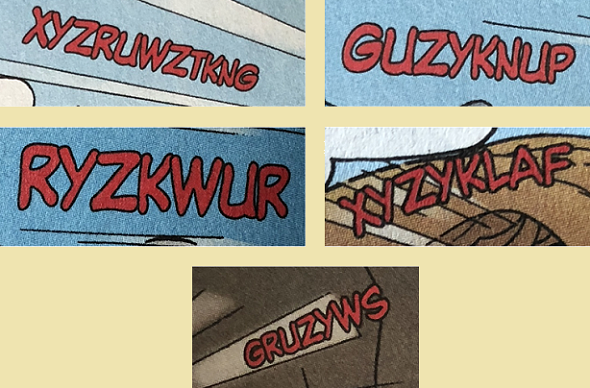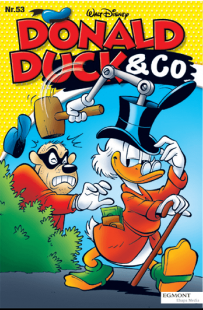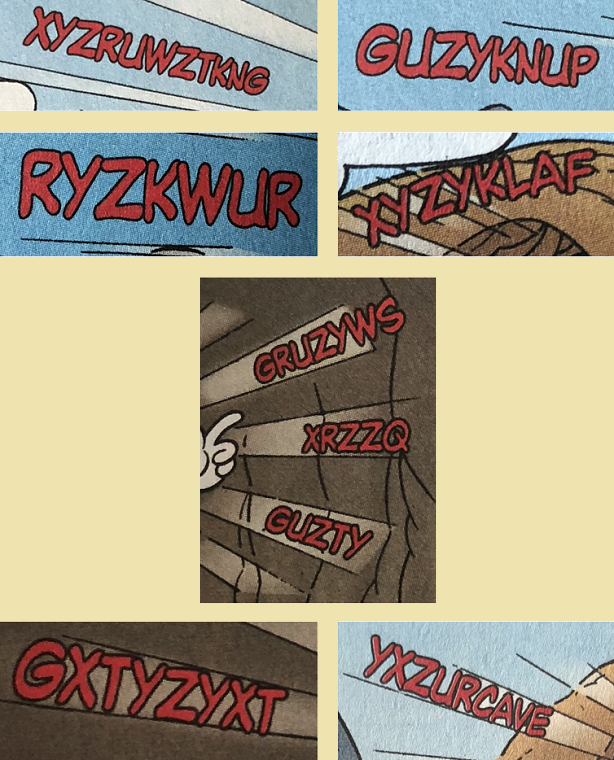A Donald Duck comic story, which was recently republished in a German Disney magazine, contains an encrypted message. The solution, if it exists, appears to be unknown. Can a reader break this cryptogram?
Blog reader and Disney comic fan Gert Brantner has informed me about an interesting cryptogram that plays a role in a Donald Duck story. This story, titled “Der Baum der Azteken” (“The Tree of the Aztecs”) is contained in issue 53/2018 of the German Disney comic magazine “DONALD DUCK & CO”.
According to Wikipedia, the stories published in this magazine are classics taken from earlier Disney publications. This means that “Der Baum der Azteken” is not new and may have been known to Disney readers for years.
The cryptogram
The story in question starts with a journey Donald Duck, his uncle Scrooge, and his three nephews take to a place where Indians live. One of these Indians, who appears to live in a cave, shouts encrypted messages that are so loud that people who listen to them go deaf.
The following picture shows the first encrypted message mentioned in the story:
Here are all the messages together (I assume that they should be read as one cryptogram):
In the story, Scrooge manages to solve this cryptogram using an “electronic code decipherer”. It turns out that the cleartext refers to a tree that allegedly bears golden apples. The major part of the plot is about the search for this unusual plant, which is finally discovered in a cave.
Unfortunately, the wording of the cleartext is not provided.
Is there a solution?
Although I am sure that this cryptogram from a Donald Duck episode will not lead us to golden apples or any other hidden treasure, I still can imagine that it is possible to decipher it. Here’s a transcription Gert Brantner provided me:
XYZRUWZTKNG
GUZYKNUP
RYZKWUR
XYZYKLAF
GRUZYWS
XRZZQ
GUZTY
GXTYZYXT
XZURCAVE
The last line contains the word CAVE. If we assume that the X is meaningless, the last line can be read as ZUR CAVE, which means „to the cave“ (but notice that ZUR is German, while CAVE is English). Caves play an important role in the story (both the Indian shouting out the encrypted messages and the tree bearing golden apples are located in a cave).
If one tries to solve this cryptogram, it is important to find out the cleartext language. The original of this story was probably written in Italian (many Disney comics are produced in Italy, and the authors, Rodolfo Cimino and Luciano Gatto, have Italian names). I am sure that there is also an English translation. However, it is certainly possible that the ciphertext mentioned in the German version is not the original one.
Can a reader solve this cryptogram? Does a reader know a version of this story in another language? If so, please let me know.
Follow @KlausSchmeh
Further reading: A new comic strip: Chief Security Officer
Linkedin: https://www.linkedin.com/groups/13501820
Facebook: https://www.facebook.com/groups/763282653806483/






Kommentare (8)